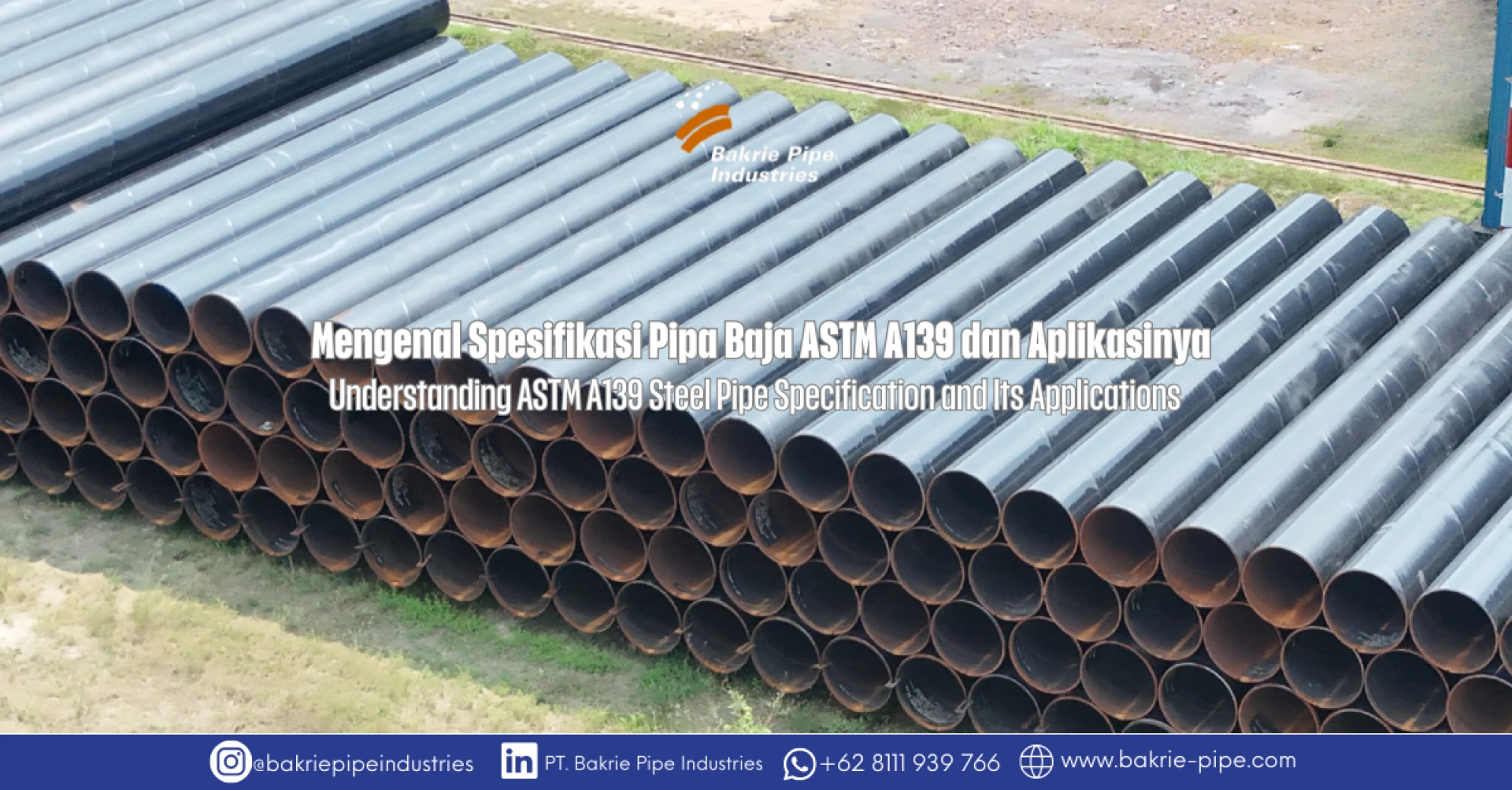Hello Pipe Enthusiasts!
At #BPIPipeInsights! previously we discussed international steel pipe standards ASTM A252 and ASTM A53; this time we cover another steel pipe standard, ASTM A139. This article explains the ASTM A139 specification concisely and practically for procurement teams, engineers, and project buyers. It focuses on the scope of the standard, grades, and production methods.
Scope of ASTM A139
ASTM A139 is the specification for electric‑fusion (arc) welded steel pipe 4 inches and larger in diameter, available as straight‑seam (longitudinal) or spiral‑seam, with wall thicknesses up to one inch. These pipes are primarily intended for transporting liquids, gas, or steam and are also used in certain structural applications and piling.
Grades in ASTM A139
ASTM A139 divides the product into five main grades: Grade A, B, C, D, and E. Practically:
- Grade A: basic mechanical characteristics; used when high strength is not required.
- Grade B: one of the most common grades; a balance between load capacity and cost.
- Grade C / D / E: grades with increased mechanical requirements or compositional variations adjusted for specific applications; chosen based on design needs and performance.
Selection of grade should be based on the project design specification and the mechanical values listed on the Mill’s Inspection Certificate, not only the grade label.
Production Methods and Seam Variations
- Electric‑Fusion (Arc) Welding: an arc welding process to join the edges of strip/coil into pipe; the method can be executed as straight‑seam (longitudinal) or spiral‑seam (helical).
- Straight‑seam EFW: common for pipes requiring dimensional tolerances and specific seam performance.
- Weld seam quality, heat‑input control, and welding procedures (WPS/PQR) determine seam performance; verification of WPS, PQR, and welder qualifications is essential.
Chemical Composition and Mechanical Properties
- ASTM A139 specification sets limits for the main element composition Carbon (C), Manganese (Mn), Phosphorus (P), Sulfur (S), and others, as well as minimum mechanical property requirements (yield, tensile, elongation) that differ between grades.
- For design purposes on your project, request the actual values from the Mill’s Inspection Certificate: yield strength, tensile strength, and elongation so they match the design loads and operating conditions.
Typical Applications
ASTM A139 steel pipes can be used for applications:
- Transportation of water, gas, and industrial fluids under standard pressures and operating conditions.
- Structural applications and piling in some civil projects (depending on grade and thickness).
- Infrastructure projects requiring large‑diameter pipe with EFW welding specifications.
Closing
Bakrie Pipe Industries has experience producing and supplying ASTM A139 steel pipe to international standards, using the most complete welding methods: High Frequency Welding (HFW)/Electric Resistance Welding (ERW), Longitudinal Submerged Arc Welding (LSAW), and Helical Submerged Arc Welding (HSAW). BPI also supports coating options and additional testing for water, industrial, or oil & gas applications that require higher protection and integrity.
If you have ASTM A139 steel pipe requirements for your project, entrust your ASTM A139 steel pipe needs to BPI. Contact our Marketing and Sales team; our team of expert Engineers will assist you.
